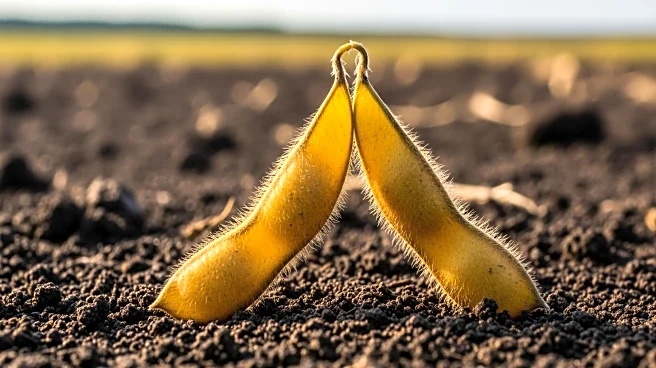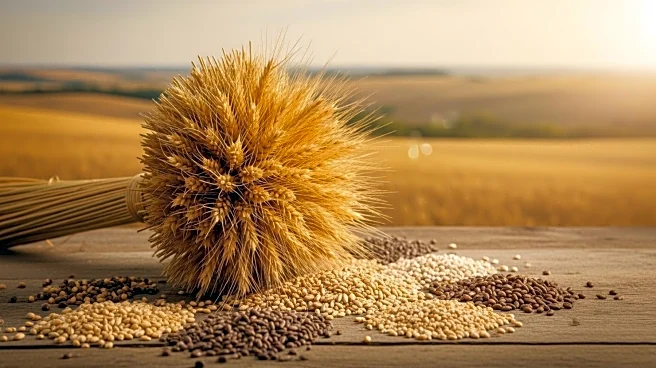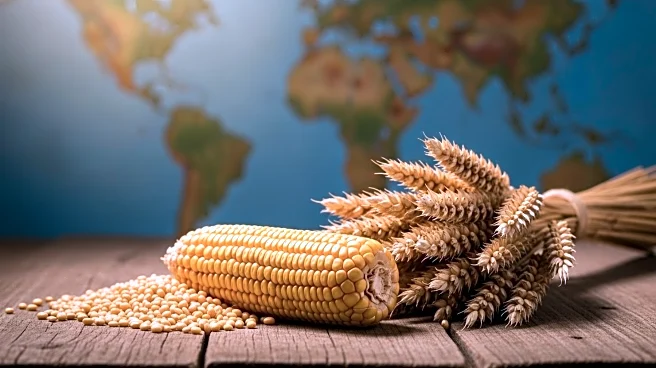What's Happening?
Corn and soybean futures in the U.S. have experienced a decline as the harvest progresses and concerns about demand persist. According to the Department of Agriculture, 18% of U.S. corn has been harvested, slightly below the five-year average. The soybean harvest is also underway, with 19% collected, trailing the average by 1%. Despite the progress, demand concerns are affecting prices, particularly due to China's shift away from U.S. soybeans and beef. Wheat export inspections have also declined, although corn and soybean assessments have increased. Additionally, windy and dry conditions in South Dakota are raising wildfire risks.
Why It's Important?
The decline in corn and soybean futures highlights the challenges faced by U.S. agricultural producers, particularly in terms of international demand. China's reduced purchases of U.S. soybeans and beef could impact the agricultural sector's profitability and influence market dynamics. The ongoing harvest and weather conditions also play a significant role in determining crop quality and yield. These factors are critical for farmers, traders, and policymakers as they navigate the complexities of agricultural production and trade. The situation underscores the importance of monitoring global trade relationships and environmental conditions that affect the agricultural industry.
What's Next?
As the harvest continues, market participants will closely watch for any changes in demand, particularly from major importers like China. The U.S. agricultural sector may need to explore alternative markets or strategies to mitigate the impact of reduced Chinese purchases. Additionally, weather conditions will remain a key factor, with potential implications for crop quality and future planting decisions. Stakeholders, including farmers and policymakers, will need to adapt to these evolving circumstances to ensure the sector's resilience and sustainability.










